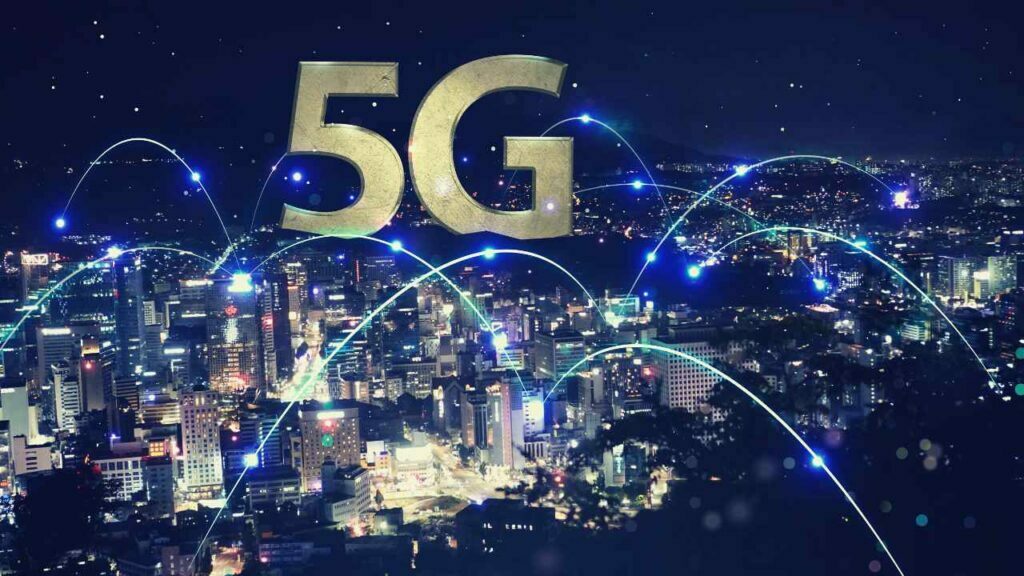5G Technology-How it Works and Its Impact
What is 5G technology?
5G technology, or 5th generation mobile networks, is the latest iteration of cellular technology that promises to revolutionize the way we connect to the internet and communicate with each other. 5G technology uses a different frequency band than previous generations of cellular technology, which allows for faster speeds, lower latency, and increased capacity. This means that 5G networks can support more devices, more data, and more applications than previous generations of cellular technology.
Significance of 5G technology
5G technology is significant because it has the potential to bring about significant changes in society, such as advancements in industries such as manufacturing, transportation, and healthcare, changes in the way we consume and interact with technology, and impact on economic growth and social development. Furthermore, 5G technology is designed to support new use cases and services that were not possible before, such as connected cars, remote surgery, and smart cities. The faster speed, low latency and increased capacity of 5G networks will bring new opportunities for innovation, research, and new business models.

How 5G Technology Works
Explanation of 5G network architecture
5G networks consist of three main components: the radio access network (RAN), the core network (CN), and the transport network.
The RAN is responsible for connecting devices to the network and is divided into two parts: the radio base station (RBS) and the user equipment (UE). The RBS, also known as a NodeB or eNodeB, is the network element that communicates directly with the UE and is responsible for radio resource management, mobility management, and security. The UE is the device that the user uses to connect to the network, such as a smartphone or tablet.
The CN is responsible for managing and routing data between the RAN and the transport network. It is divided into two parts: the control plane and the user plane. The control plane is responsible for managing and controlling the network, including tasks such as authentication, authorization, and billing. The user plane is responsible for transmitting data between the RAN and the transport network.
The transport network is responsible for carrying data between the CN and other networks, such as the internet. It may consist of various technologies, including fiber-optic cables, microwave links, and satellite connections.
5G networks may also include additional components, such as edge computing nodes, which are used to process data closer to the source and reduce latency, and network slicing, which allows for the creation of multiple virtual networks on top of a single physical infrastructure.
5G Vs Previous Generations
5G is the fifth generation of cellular technology and is a significant improvement over previous generations, such as 4G, 3G, and 2G. Some of the key differences between 5G and previous generations include:
- Speed: 5G networks are capable of much higher speeds than previous generations. While 4G networks typically have a maximum theoretical speed of around 100 Mbps, 5G networks have a maximum theoretical speed of 10 Gbps. This means that 5G networks can provide faster internet speeds and more responsive mobile experiences.
- Latency: 5G networks have much lower latency than previous generations. Latency is the delay between sending a request and receiving a response. 5G networks are designed to have a latency of less than 1 ms, while 4G networks typically have a latency of around 50 ms. This means that 5G networks can provide more responsive mobile experiences and support new use cases such as virtual reality and autonomous vehicles.
- Capacity: 5G networks can support many more devices than previous generations. This is because 5G networks use a different type of radio spectrum (mmWave) which has more bandwidth available, and also use advanced technologies such as beamforming and massive MIMO (multiple input multiple output) to increase capacity.
- Reliability: 5G networks are more reliable than previous generations as they use advanced technologies such as network slicing to create multiple virtual networks that can be customized to specific use cases, Quality of Service (QoS) to ensure that critical data is delivered reliably and in real-time and network redundancy to ensure network availability even in case of network failures.
- Energy Efficiency: 5G networks are more energy-efficient than previous generations. This is because 5G networks use advanced technologies such as device-to-device (D2D) communication, which allows devices to communicate directly with each other rather than going through the network, and network edge computing, which allows data to be processed closer to the source.

Impact of 5G Technology on Business
Advancements in industries such as manufacturing, transportation, and healthcare: 5G technology is expected to have a significant impact on various industries by enabling new use cases and improving efficiency. In the manufacturing industry, 5G technology can be used for Industry 4.0, allowing for the integration of IoT devices and automation to improve production efficiency and quality control.
In transportation, 5G technology can be used to enable connected vehicles and advanced driver assistance systems, improving safety and reducing the need for human drivers. In healthcare, 5G technology can be used for telemedicine, allowing for remote consultations and monitoring of patients, and also for remote surgery and robotic-assisted surgery.
Changes in the way businesses operate and compete: 5G technology is expected to change the way businesses operate and compete. With the high speed and low latency of 5G networks, businesses will be able to process and analyze large amounts of data in real-time, allowing them to make faster and more informed decisions. Additionally, with the increased capacity of 5G networks, businesses will be able to connect more devices and support more users, which will open up new opportunities for revenue and growth.
Opportunities for new products, services and business models: 5G technology is expected to open up new opportunities for businesses to create new products and services, and also to develop new business models. With the improved performance of 5G networks, businesses will be able to create new applications and services, such as virtual reality and augmented reality, that were not possible with previous generations of cellular technology.
Additionally, with the increased capacity of 5G networks, businesses will be able to connect more devices and support more users, which will open up new opportunities for revenue and growth. Finally, the increased flexibility and adaptability of 5G networks, will allow for the development of new business models, such as network slicing and edge computing, that can be tailored to specific use cases and customer needs.
Impact of 5G Technology on Society
Changes in the way we consume and interact with technology: 5G technology is expected to change the way we consume and interact with technology. With the high speed and low latency of 5G networks, users will be able to access and interact with technology in new and more immersive ways. For example, 5G technology will enable new use cases such as virtual reality and augmented reality, which will change the way we consume and interact with content such as video, gaming, and social media. Additionally, 5G technology will enable new use cases such as autonomous vehicles and drones, which will change the way we move around and interact with our environment.
Impact on economic growth and social development: 5G technology is expected to have a significant impact on economic growth and social development. 5G technology will enable new use cases and applications that will improve efficiency and productivity in various sectors such as manufacturing, transportation, and healthcare, which will drive economic growth. Additionally, 5G technology will enable new use cases and applications that will improve access to services and information, which will drive social development. For example, 5G technology will enable telemedicine, which will improve access to healthcare services in remote and underserved areas.
Potential effects on privacy and security: The increased connectivity and data processing capabilities of 5G technology could also have potential effects on privacy and security. With more devices and sensors connected to 5G networks, there will be a larger amount of data that is being generated and shared, which could be vulnerable to breaches, hacking, and other cyber-attacks. Additionally, with the increased use of edge computing, data could be processed and stored closer to the source, which could raise concerns about data privacy and ownership. It is important that businesses, governments, and individuals take steps to ensure the security and privacy of data on 5G networks to mitigate these potential risks.

Challenges and Opportunities
Challenges such as lack of infrastructure and standardization: One of the main challenges facing the deployment of 5G technology is the lack of infrastructure and standardization. To deploy 5G technology, significant investments are required in building new networks and upgrading existing infrastructure. Additionally, there are still many technical challenges that need to be addressed, such as the development of new standards and technologies to support 5G.
Opportunities for innovation and progress: Despite these challenges, 5G technology presents many opportunities for innovation and progress. The increased speed and capacity of 5G networks will enable new use cases and applications that were not possible with previous generations of cellular technology. Additionally, 5G technology will enable new business models and revenue streams, which will drive innovation and progress in various sectors such as manufacturing, transportation, and healthcare.
Role of government and industry in addressing these challenges: The deployment of 5G technology requires collaboration between government and industry. Governments have a role in creating a favourable regulatory environment and in investing in the necessary infrastructure. Additionally, governments can play a role in supporting research and development to address technical challenges and in promoting the adoption of 5G technology. On the other hand, industry has a role in developing and commercializing new technologies and in investing in the necessary infrastructure. Additionally, industry can play a role in promoting the adoption of 5G technology and in addressing privacy and security concerns.
Future of 5G technology
5G technology is the fifth generation of cellular technology, which is designed to provide high speed, low latency, increased capacity, improved reliability and energy efficiency. It is expected to have a significant impact on various industries such as manufacturing, transportation, and healthcare, and also change the way businesses operate and compete. Additionally, it will open up new opportunities for businesses to create new products and services, and also to develop new business models. Additionally, 5G technology is expected to change the way we consume and interact with technology, drive economic growth and social development, however, it also presents challenges such as lack of infrastructure and standardization.
5G technology is still in its early stages of deployment, but it is expected to continue to evolve and improve over time. The next evolution of 5G technology is 6G which has been under research and development, it is expected to provide even higher speeds, lower latency, and improved capacity than 5G technology. As the technology improves, it will enable new use cases and applications that will continue to drive innovation and progress in various sectors and improve our daily lives.
5G technology presents significant opportunities for innovation and progress, however, it also presents challenges that need to be addressed. Governments and industry need to collaborate to create a favourable regulatory environment and invest in the necessary infrastructure. Additionally, research and development is needed to address technical challenges and promote the adoption of 5G technology. Businesses should also consider the potential impact of 5G technology on their operations and explore new opportunities for revenue and growth. It is also important to address privacy and security concerns to ensure the secure and responsible deployment of 5G technology.

The Knowledge Hub is intended for a wide range of audiences, including students, professionals, and anyone who is curious about the world and wants to expand their knowledge base. It can be useful for research, education, and personal curiosity. The Knowledge Hub is constantly updated to reflect the latest information and insights, and our visitors are encouraged to check back often for new content. Thank You.
We also have live online classes where we teach 2 courses which are given below. Please go through them and if interested you can take a Free Trial Class.






